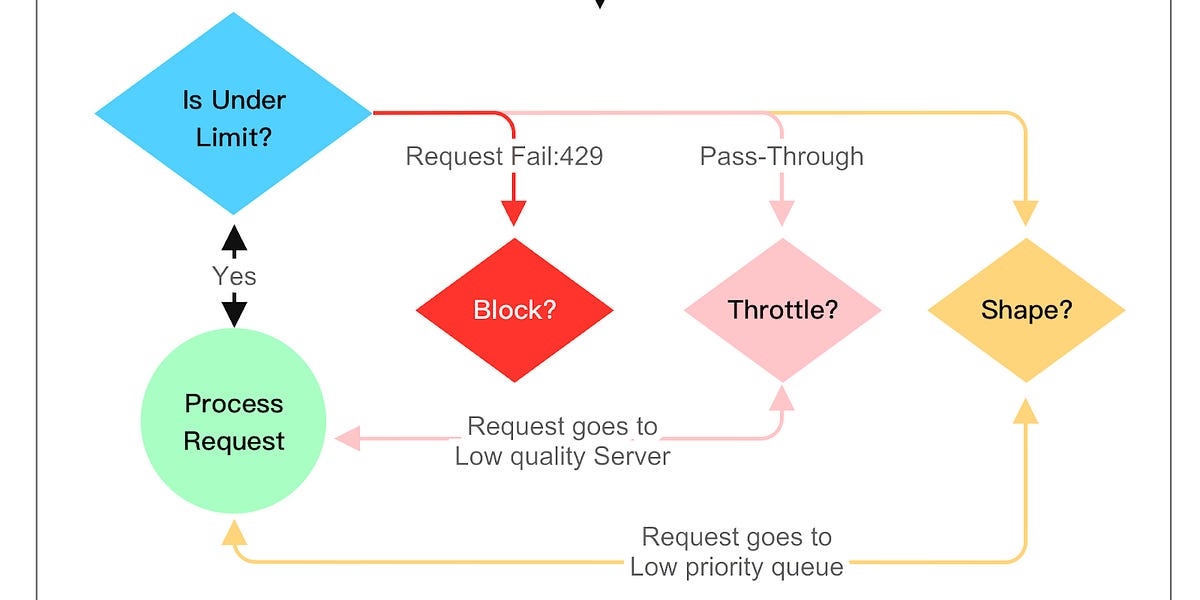Have you heard of "rate limiters"? You've probably seen messages like "Please wait, too many requests" while using apps or services✨
Actually, this is a mechanism that limits the number of requests that can be processed within a certain time period to prevent servers from crashing🧠
This time, I'll roughly explain how to build rate limiters from a system design perspective🌸
What is a Rate Limiter?🤔
Simply put, it's a rule that says "you can only use this ○ times in ○ seconds".
For example:
- Can use API up to 100 times per minute
- Can attempt login up to 1000 times per hour
By applying these limits, we regulate server load💡
Without this, services could crash due to malicious attacks or simply too much traffic😳
How to Design One? 3 Key Points✨
-
Determine the limit unit
For example, is it "5 times in 10 seconds" or "100 times in 1 hour"? This becomes the basic rule📌 -
Where to count requests
- On the application side?
- On the server side?
- Or at the API gateway?
Most often, counting happens near the server entrance (like API gateways)🧠
-
Counter update method
A mechanism that increments the count with each request and rejects when it exceeds the set limit.
But it's not just about counting - how long we count for is important⚡
3 Commonly Used Algorithms🎀
1. Fixed Window
Counts requests within fixed time windows. For example, resets every minute, counting only requests between 0-59 seconds📅
Simple, but can become lenient at time boundaries when there's heavy traffic😵💫
2. Sliding Window
Constantly checks the number of requests from the past ○ seconds.
Reduces the time boundary problem, but calculations are a bit more complex✨
3. Token Bucket
Imagine storing tokens (permits) in advance and consuming tokens when requests come.
Requests are rejected if there are no tokens. Tokens are replenished over time🎈
This can handle occasional bursts (sudden high traffic) too♪
How to Actually Implement?🔧
- Manage counts in memory or databases
Fast counting stores like Redis are often used📚 - Data synchronization is challenging in distributed systems
With multiple servers, coordination is needed on where to count💭 - Including limit information in responses is considerate
Telling users "You have X requests left" makes them feel more secure🥺
How to Answer in Interviews?🧠
I was also like "What's that?" at first, but
"Rate limiters are mechanisms to prevent excessive access by applying time-based limits" is a good explanation,
- And mentioning that implementations include algorithms like Fixed Window or Token Bucket should be fine👌
Also, adding a word about the challenges of count synchronization in distributed environments and solutions for them would be great✨
Rate limiters might seem modest, but they're essential mechanisms for service stability💭
When you learn about them, they're simpler than expected and you'll think "Oh, I get it now," so if it comes up in interviews, just calmly explain🫶
Comments
チャーリー
So helpful! I'm really grateful!









